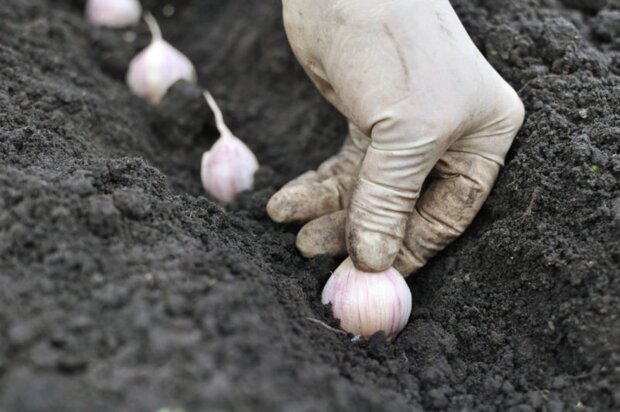For these reasons, many people grow garlic in their vegetable gardens.
To get a good harvest, you need to know the rules of planting garlic and the peculiarities of its cultivation, as reported by Ukr.Media.
As reported: Popularni.live
When to plant garlic:
To get a spring harvest of garlic, it should be planted in the winter.
Experts recommend this period so that the plant can develop stronger and more useful bulbs, especially under the influence of frost. Fall planting is done from late October to mid-November, or even earlier.

The soil should be sufficiently nutritious and light to allow light, water, and air to pass through. It is recommended to change the planting location for this multivitamin plant every two years to allow the garlic to obtain useful components from the top layer of soil.
Failure to follow this recommendation can result in the plant not getting the necessary nutrients, making it weak and susceptible to various diseases.

In such cases, it is important to know the crop rotation system and plant garlic after crops that contribute to its proper development and vitality, preventing the occurrence of diseases that will not require additional treatment against pests. After that, garlic can be planted for the winter.
The best precursors to garlic are forage grasses, cereals (except barley and oats), eggplants, and zucchinis. A field previously used to grow berries, cabbage, cucumbers, pumpkins, tomatoes, and peppers is also acceptable.
Garlic should not be planted after crops such as carrots (which can be attacked by nematodes and strongly deplete the soil), onions (which consume a lot of potassium that may be insufficient for proper garlic nutrition), beets, or potatoes (which can be attacked by fusarium).

What should be garlic's neighbors?
Choosing the right plot is one criterion for proper planting of garlic for winter, but it is also necessary to choose the right "neighbors" for garlic to grow comfortably.
The best neighbors for garlic are tomatoes, carrots, horseradish, strawberries, cucumbers, marigolds, chicory, and beets. It is best to avoid planting garlic near parsnips, lentils, peas, and beans.

Following the principle of crop rotation, the proximity of crops, and the rules for planting will result in a good and healthy garlic harvest without additional effort from the gardener.
Read more: Taste like childhood": Real milk ice cream without added cream
As we wrote earlier: Universal "4 seasons" cutlets: A juicy combination of vegetables and meat





































